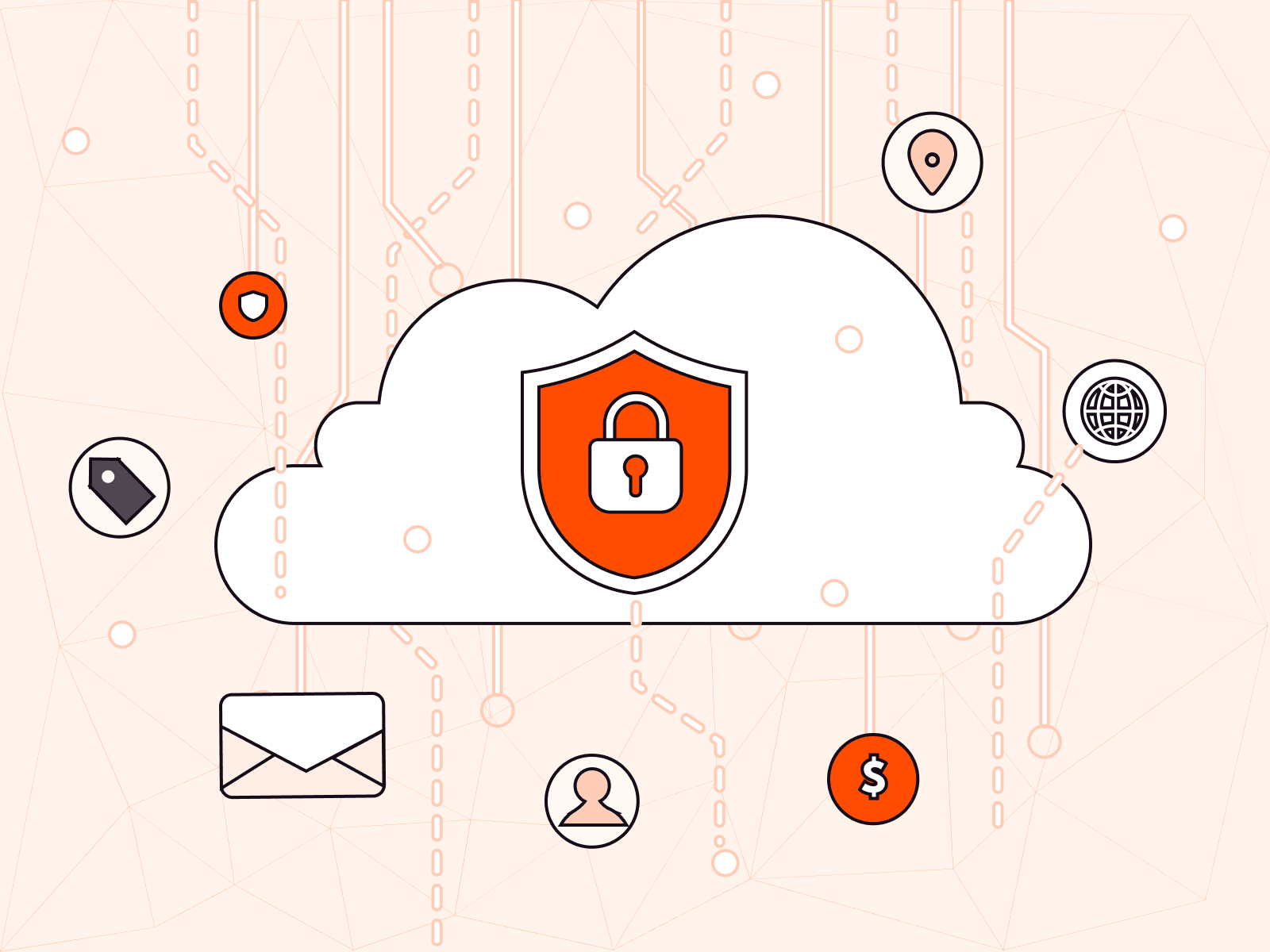APIs: A Crucial but Hidden Security Threat
- August 15, 2024
- 5 min read

APIs (Application Programming Interfaces) are an intrinsic part of the modern digital landscape. They allow different systems to communicate and exchange data, enabling a range of functionalities from simple data retrieval to complex interactions across platforms. As we grow increasingly reliant on complex digital interactions for our day-to-day operations, API use has grown exponentially. APIs now account for over 80% of all internet traffic.
It should go without saying that you can’t afford to leave that traffic unsecured. And with the surge in API usage comes a rise in API-specific security threats, as cyberattackers seek to intercept sensitive data, exploit vulnerabilities, and disrupt services, underscoring the critical need for robust API security measures. Read on to learn how WAAP can protect your business from API security vulnerabilities.
Why APIs Are a Security Risk
APIs handle a significant amount of web traffic, from regular consumer site visits to more complex machine-to-machine traffic. But unlike traditional web applications, APIs operate behind the scenes without a user interface, leading to a lack of visibility and awareness of their complexity and vulnerabilities. This, along with the high volume of traffic APIs manage, makes them a crucial but often overlooked component of web security.
Additionally, APIs are often developed and deployed by teams that don’t have stringent security protocols front of mind. The rapid development cycle and frequent deployment of APIs can sometimes result in security lapses, since they may be deployed without thorough testing or adequate security measures. This can lead to vulnerabilities that attackers can exploit. For example, APIs might be left active unintentionally, leading to a critical blind spot where organizations are unaware of which APIs are actually exposed to the internet. This visibility gap can result in a discrepancy between what an organization believes is exposed and what is truly accessible.
What Happens if Your APIs are Unsecured?
Having an unsecured API in your infrastructure can leave your organization vulnerable to several significant risks. Unauthorized users could use an insecure API as a gateway to access your application, perform actions beyond their role or permissions, or access sensitive data. This could lead to outages or data breaches in which your or your users’ sensitive information is exposed. Malicious users may exploit these vulnerabilities to disrupt your service, causing it to crash or slow down, and leading to downtime which can affect your organization’s operations and user satisfaction.
These incidents often receive extensive media coverage, leading to long-term reputational damage. Even companies with strong security measures aren’t immune. Microsoft, for example, faced one of the largest-ever attacks in 2021, when hackers exploited critical vulnerabilities to compromise the data of over 60,000 organizations globally.
APIs can be used as gateways to execute more sophisticated attacks. They may also serve as stepping stones to access more sensitive areas of your application and execute sophisticated cyberattacks.
How Different Types of API Attacks Harm Your Business
APIs can be vulnerable to various types of attacks, each posing significant risks to businesses, including:
- Insufficient or missing authentication: Attackers often scan for exposed API endpoints that lack proper authentication or have weak access controls. These endpoints can be exploited to gain unauthorized access or disrupt services, steal data, or disrupt services. For your company, this can mean compromised customer data, service interruptions, and potential financial losses.
- Credential stuffing: Stolen credentials, frequently acquired from breaches on other platforms, can be used to access APIs illegitimately. Attackers exploit these credentials to manipulate API functions and access protected resources. This can lead to unauthorized access to sensitive information, fraudulent transactions, and damage to your organization’s reputation.
- OWASP top-ten attacks: OWASP top-ten breaches can have severe consequences, including loss of data integrity, exposure of confidential information, and significant operational disruption. For example, SQL injections manipulate API requests to execute malicious SQL commands on the database, potentially corrupting data, compromising the database, and causing severe operational disruptions. Cross-site scripting XSS involves injecting malicious scripts into API responses, which are then executed by the user’s browser leading to session hijacking, data theft, and compromised user accounts.
- L7 distributed denial-of-service (DDoS) attacks: Attackers overwhelm an API with artificial traffic, such as a flood of requests, causing it to become unresponsive. This overload can disrupt services, leading to downtime and impacting legitimate users’ ability to access the API. The resulting service interruptions can harm business operations, customer trust, and overall user satisfaction.
- Data breaches: APIs with unprotected or poorly secured endpoints can be exploited to access sensitive data, risking data leakage, privacy loss, and legal repercussions. Businesses that fall victim to data breaches could face significant regulatory fines, loss of customer trust, and reputational damage.
- Shadow APIs: Undocumented or forgotten APIs that are not actively monitored can pose significant security risks. Attackers can exploit these shadow APIs to gain access to sensitive data or system functionalities that administrators may not be aware of. This can lead to unauthorized access, data breaches, and vulnerabilities that undermine your company’s overall security posture.
Strategies for Effective API Protection
A multi-layered protection strategy is essential to defend against threats. Look for these features in a WAAP; they’re non-negotiables for robust API security:
- API discovery: Make sure to choose a WAAP solution that constantly monitors the organization’s traffic and features API discovery, including discovering and mapping all endpoints, both known and unknown. This thorough approach means you’re aware of every potential point of attack, leaving no potential security gaps left unchecked.
- Configuration management: Once identified, APIs need proper configuration. The WAAP you select should enable grouping and tagging APIs based on their function and access needs, allowing you to apply appropriate security functions based on these classifications, streamlining management and enhancing security.
- Access control: Strong authentication and authorization are key to a powerful WAAP. Look for a solution that provides robust access controls to APIs to compensate for missing or weak existing access controls and ensure that only authorized users can interact with APIs. This reduces the risk of unauthorized access.
- Vulnerability detection: Continuous monitoring helps spot vulnerabilities that may arise from poor configuration or negligence. Be sure to pick a WAAP that identifies and addresses these issues before they can be exploited.
- Seamless integration: Select a WAAP that integrates smoothly with other security solutions, including DDoS protection and network security tools. This integrated approach ensures comprehensive protection across your entire digital landscape. Choose a solution that offers most of its functionalities out of the box, requiring minimal configuration, and allowing you to benefit from enhanced security immediately.
The Unique Advantages of Gcore WAAP
Operating at the network edge, Gcore WAAP delivers protection that complements your existing operations, providing advanced security with flawless performance. Our edge-based approach ensures that security measures are applied efficiently and effectively. For your business and end users, this means fast, reliable access to applications and services, with low latency and minimized downtime.
A standout feature of Gcore WAAP is its ability to leverage data from across its security cloud. This allows for dynamic, responsive protection tailored to the specific vulnerabilities of each API, providing a level of adaptation and precision that many other vendors lack. Machine-learning (ML) technology and heuristic behavioral analysis are at the core of this adaptive protection, enabling Gcore WAAP to detect and respond to evolving threats with accuracy.
Gcore WAAP is more than a standalone product. In addition to an advanced security cloud system and dynamic protection systems, by applying machine learning and behavioral analysis to monitor and defend against API threats, Gcore WAAP manages every aspect of your security cohesively, offering peace of mind for your APIs and beyond!
Securing APIs Against Emerging Threats
As APIs continue to be an integral facet of digital operations, ensuring their protection against a range of security threats is critical. Gcore WAAP offers a sophisticated and integrated solution for API security, going beyond the capabilities of traditional security solutions and combining advanced detection, thorough management, and seamless integration with broader security measures. For organizations seeking to secure their digital infrastructure against API-related threats, our cutting-edge solution effectively tackles both current and emerging risks.
Get more information on how Gcore WAAP can enhance your API security strategy. Stay up to date with our latest insights and developments on cybersecurity solutions on the Gcore Blog or learn more about API security best practices with our dedicated guide.
Related articles
Subscribe to our newsletter
Get the latest industry trends, exclusive insights, and Gcore updates delivered straight to your inbox.






